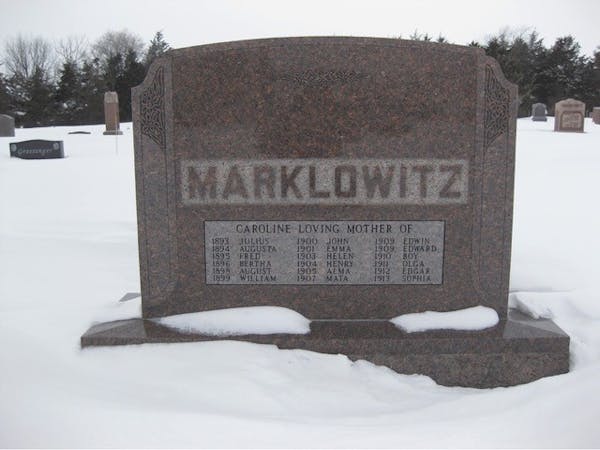In her final hours as an enslaved person, Eliza Winston changed out of her old washing dress and into a calico dress — her finest one — at a boarding house near Lake Harriet on Aug. 21, 1860.
"That simple act was significant and symbolic," writes Christopher Lehman, an ethnic studies professor at St. Cloud State University, in his new book, "It Took Courage: Eliza Winston's Quest for Freedom."
"Enslavers controlled the labor of their captives, telling them when to begin and end their workdays," Lehman writes. By removing her washing dress, he says, Winston stepped into freedom for the first time in her 43 years — and became the first person to successfully challenge in court Minnesota's informal practice of welcoming vacationing Southern slave owners who brought their human property north.
"Her story exemplifies Minnesota's complex relationship to slavery," Lehman writes, because the state's tourism industry required local officials and businesses to overlook the fact that Minnesota was a free state with a constitutional ban against slavery.
Others have written about Winston finding freedom in Minnesota, but Lehman breaks all kinds of new ground. His research shows that she was 13 years older than previously thought; in her 1860 court affidavit, Winston said she was 30, but Lehman scoured records to pinpoint her birth in 1817.
And, Lehman has unearthed a surprising new character long overlooked in Winston's story: President Andrew Jackson, who co-owned Winston from 1834 to 1842 — including during his final three years in the White House.
Winston came to Minnesota during the summer of 1860 with her vacationing owners, Mississippians Richard and Mary Christmas and their 7-year-old daughter, Norma. When the Christmases got wind of Winston's plan to claim her freedom with the help of local abolitionists, they moved from the Winslow House in St. Anthony to a boarding house near Lake Harriet to maintain her captivity.
But Winston's helpers filed a writ to the question of her freedom in Minnesota before Judge Charles Vanderburgh, who had served for nine months as Minneapolis' first district judge. When Winston's lawyer pointed to the young state's ban on slavery, Vanderburgh promptly ruled that Winston was free — effective immediately.
Abolitionists, dodging local pro-slavery mobs, helped Winston follow the Underground Railroad to Detroit and then Canada. When the Civil War erupted the following spring, the southern tourists no longer traveled to Minnesota.
Lehman's book explains how Winston's freedom came amid three years of countervailing winds. The U.S. Supreme Court's Dred Scott decision in 1857 meant that enslaved people could not, under any circumstances or anywhere, be free. A financial panic that same year left Minnesota's fledgling economy more dependent than ever on tourism dollars from southern slave owners, according to Lehman.
Never mind that Minnesota became a state in 1858 with a constitution that insisted: "There shall be neither slavery nor involuntary servitude in the state."
Lehman's 2019 book, "Slavery's Reach: Southern Slaveholders in the North Star State," details the spider web of connections between early Minnesota development and slave owner money flowing north. For this book, Lehman decided to focus on Winston and follow the sizable paper trail she left.
"The story of her emancipation while in Minnesota was very powerful to me," he said.
While doing research for the book, Lehman discovered Jackson's legal claim to Winston. Jackson provided the money to purchase Winston and other enslaved laborers in 1834 when they were auctioned to pay the debts of their owners, who were relatives of the president's deceased wife. He maintained his interest in Winston until she was transferred to his grandniece in 1842.
Jackson, who enslaved more than 100 people, appointed Supreme Court Chief Justice Roger Taney in 1836. Two decades later, Taney wrote the Court's majority opinion in the Dred Scott ruling. "Winston's victory produced a compelling irony: a woman Jackson himself had enslaved defeated a part of his legacy in Minnesota," Lehman writes.
For nearly 165 years, according to Lehman, Winston's "iconic status [in Minnesota] has had less to do with her character and the details of her enslavement" than with the local abolitionists who helped her win freedom. Lehman has successfully flipped that script, providing a deeper look at Winston.
"As many African Americans today struggle to receive justice after suffering brutality from law enforcement," he writes, "her story stands as a rare example of an African American relentlessly confronting a legal institution of brutality — the institution of slavery — and ultimately winning justice for herself in a court of law."
William D. Green, a retired Augsburg University history professor and author who also has written about Winston, tips his hat to Lehman's latest effort.
"With this book," Green writes in a blurb, "Lehman presents a revealing addition to the complex story of Minnesota's racial history."
The Minnesota Historical Society Press will host a book launch featuring Lehman at 7 p.m. on April 18 at Mill City Museum, 704 S. 2nd St., Minneapolis.
Curt Brown's tales about Minnesota's history appear every other Sunday. Readers can send him ideas and suggestions at mnhistory@startribune.com. His latest book looks at 1918 Minnesota, when flu, war and fires converged: strib.mn/MN1918.

Vaudevillians played musical chairs, personally and professionally, in 1930s Winona

Girl, 13, took charge amid 1925 storm chaos on Minneapolis lake

Pioneering bird-in-hand magician went from Mankato to stages around the world



